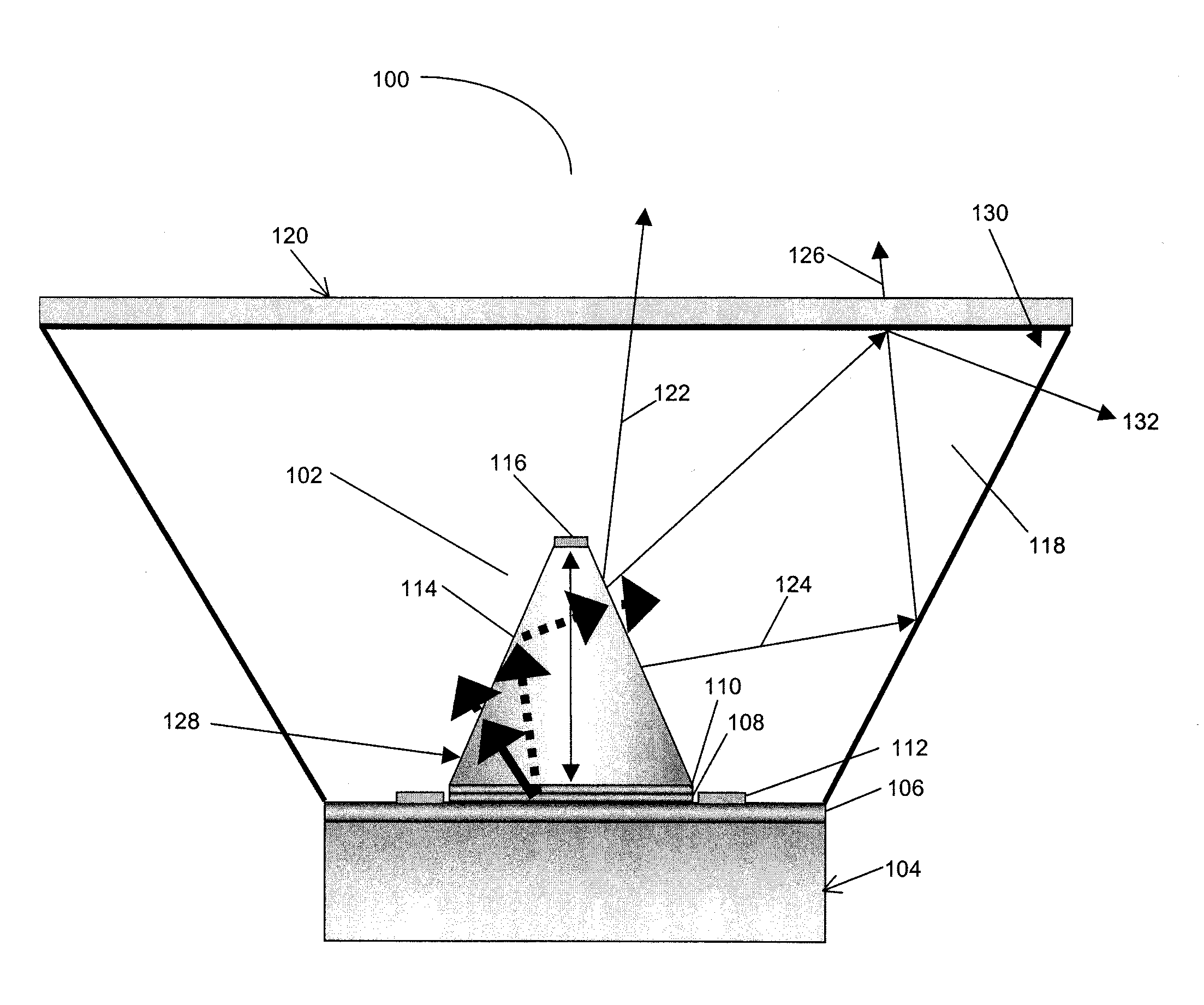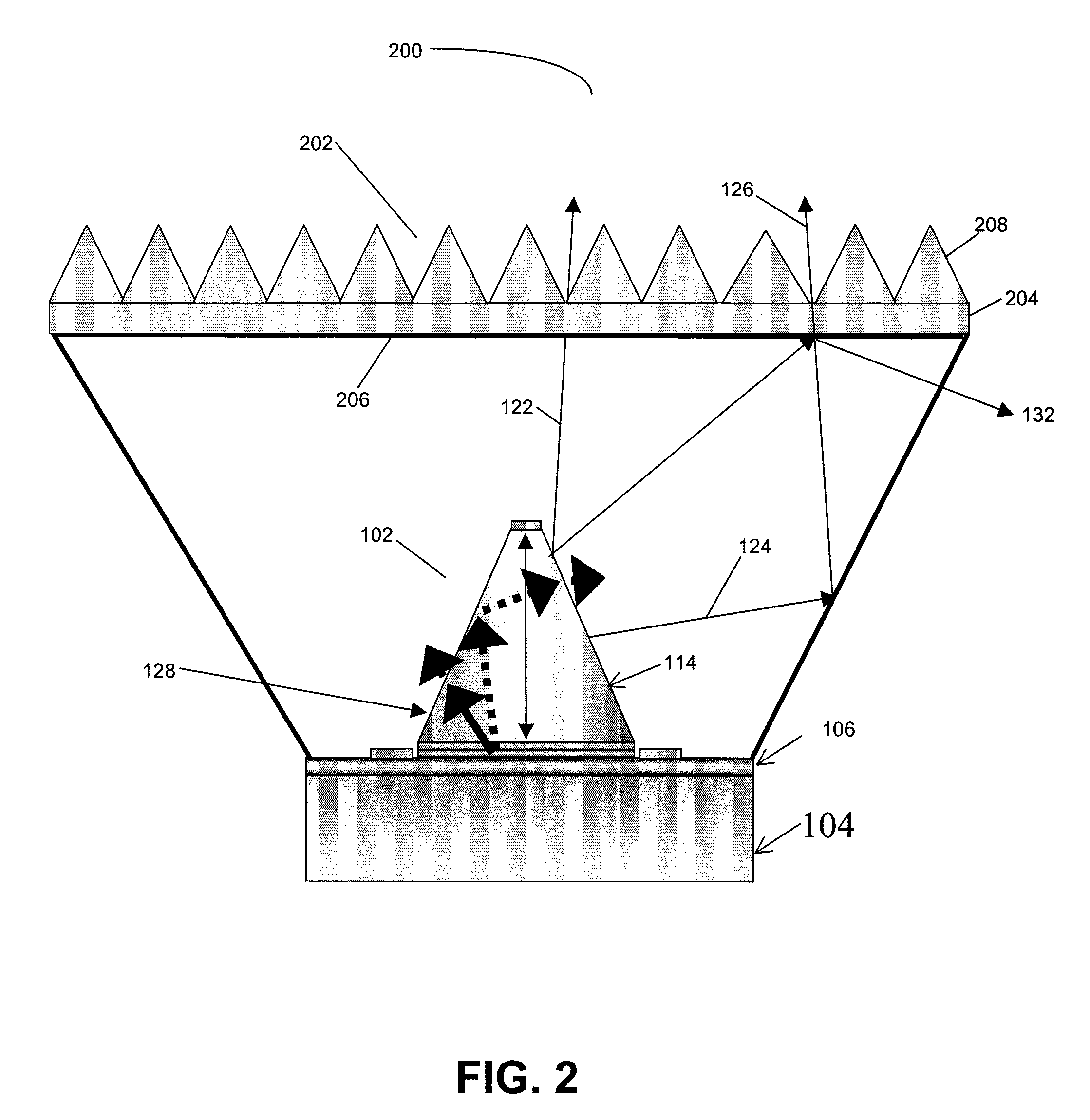High efficiency light emitting diode (LED)
a light emitting diode and high-efficiency technology, applied in the direction of planar/plate-like light guides, light guides for lighting systems, lighting and heating apparatus, etc., can solve the problems of difficult surface feature shaping for improving light extraction efficiency, requiring zno crystal growth equipment, and difficult to grow thick layers, etc., to reduce light absorption, and increase the efficiency of led
- Summary
- Abstract
- Description
- Claims
- Application Information
AI Technical Summary
Benefits of technology
Problems solved by technology
Method used
Image
Examples
Embodiment Construction
[0044]In the following description of the preferred embodiment, reference is made to the accompanying drawings which form a part hereof, and in which is shown by way of illustration a specific embodiment in which the invention may be practiced. It is to be understood that other embodiments may be utilized and structural changes may be made without departing from the scope of the present invention.
[0045]Overview
[0046]The purpose of the present invention is to provide a means of increasing the light extraction efficiency from a light emitting diode (LED) by combining shaped high refractive index elements with an (Al, Ga, In)N LED and shaped optical elements. By increasing light transmittance and light extraction, subsequent device performance is increased.
[0047]In one embodiment of the present invention, a high refractive index ZnO layer is wafer bonded to a GaN LED. A cone is etched in the high refractive index ZnO layer and contacts are fabricated on the GaN LED. The ZnO / GaN hybrid ...
PUM
 Login to View More
Login to View More Abstract
Description
Claims
Application Information
 Login to View More
Login to View More - R&D
- Intellectual Property
- Life Sciences
- Materials
- Tech Scout
- Unparalleled Data Quality
- Higher Quality Content
- 60% Fewer Hallucinations
Browse by: Latest US Patents, China's latest patents, Technical Efficacy Thesaurus, Application Domain, Technology Topic, Popular Technical Reports.
© 2025 PatSnap. All rights reserved.Legal|Privacy policy|Modern Slavery Act Transparency Statement|Sitemap|About US| Contact US: help@patsnap.com



